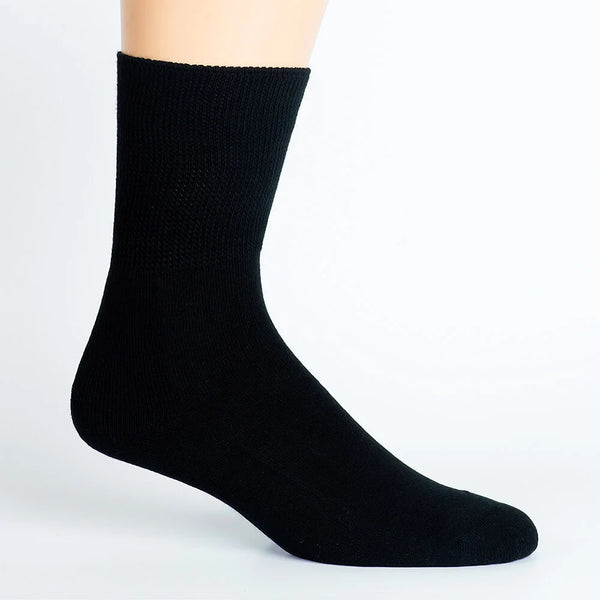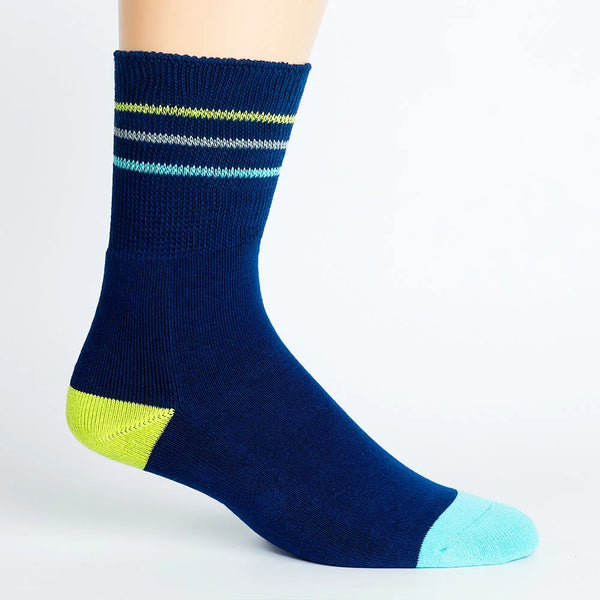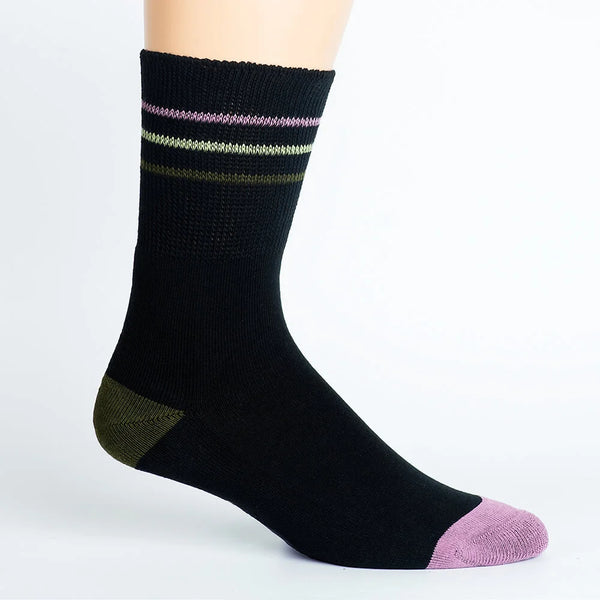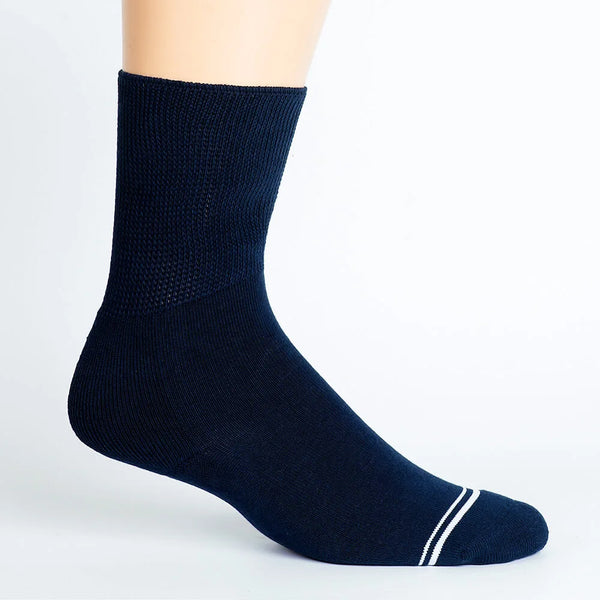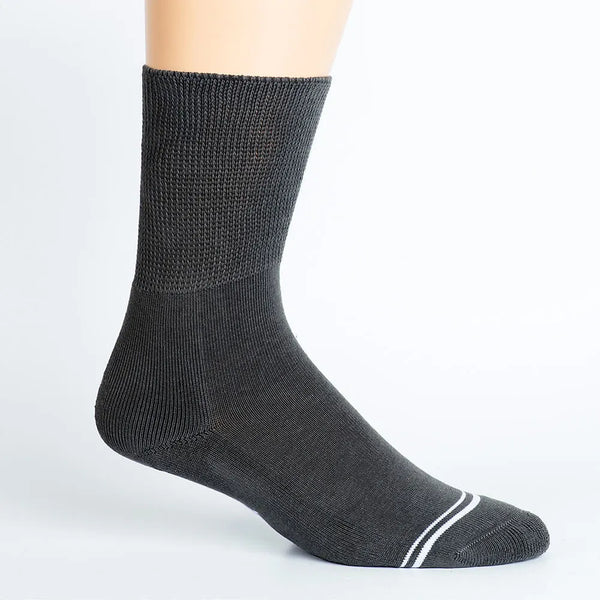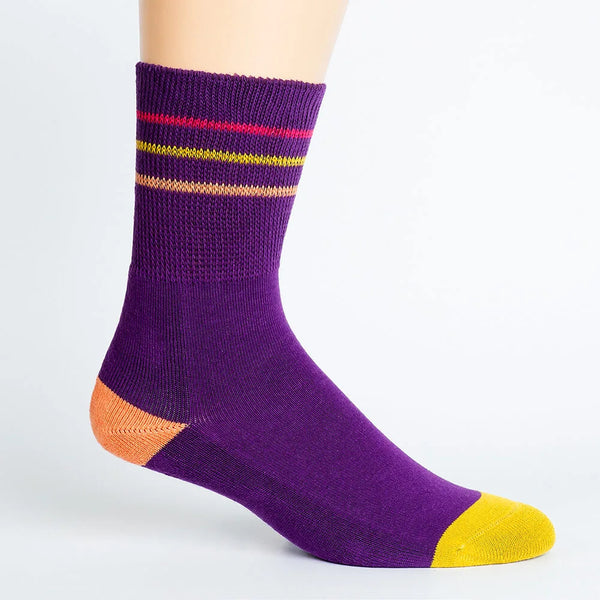Understanding Neuropathy: What It Is, Who It Affects, and How Diabetic Socks Can Help

Neuropathy is a condition that affects millions of people worldwide, often starting quietly in the feet before it becomes noticeable. For people living with diabetes, neuropathy is one of the most common complications—and one that requires extra attention to foot health.
In this article, we’ll break down what neuropathy is, who is most at risk, the symptoms to watch for, and why diabetic socks can be an important part of daily care.
What Is Neuropathy?
Neuropathy refers to damage to the peripheral nerves—the nerves outside of the brain and spinal cord. When these nerves are injured, they can’t properly send signals between the body and brain, which may lead to pain, tingling, or numbness in the hands and feet.
According to the Mayo Clinic, peripheral neuropathy can be caused by a variety of conditions, but diabetes is the leading cause. In fact, American Diabetes Association research shows that up to 50% of people with diabetes will develop some form of neuropathy during their lifetime.
Who Gets Neuropathy?
While anyone can develop neuropathy, certain groups are at higher risk:
- People with diabetes – Long-term high blood sugar levels can damage nerves over time, leading to diabetic neuropathy.
- Older adults – Risk increases with age.
- Those undergoing chemotherapy – Some cancer treatments cause nerve damage.
- People with vitamin deficiencies – Especially B vitamins.
- Individuals with autoimmune diseases or toxin exposure – Conditions like rheumatoid arthritis or exposure to heavy metals can also trigger neuropathy.
The Cleveland Clinic emphasizes that early prevention and symptom management are key to reducing complications.
Common Symptoms of Neuropathy
Neuropathy often starts in the feet and toes and may progress upward. Common signs include:
- Tingling or “pins and needles” sensations
- Burning or stabbing pain (sometimes described as burning feet neuropathy)
- Numbness or loss of sensation
- Muscle weakness
- Sensitivity to touch (even light fabric can feel painful)
Because symptoms may be mild at first, many people don’t realize they have nerve damage until it has progressed. This is why proactive foot care is essential.
Why Diabetic Socks Matter
For those with diabetes and neuropathy, the feet are particularly vulnerable. Reduced sensation can mean that cuts, blisters, or pressure marks go unnoticed—and untreated, these can lead to infections or even ulcers.
That’s where diabetic socks come in. Unlike regular socks, they are specifically designed to protect sensitive feet:
- Non-binding tops – Prevent restriction and improve circulation
- Seamless construction – Reduces irritation and pressure points
- Moisture-wicking fabric – Keeps feet dry and lowers risk of fungal infections
- Soft, cushioned design – Adds comfort while reducing friction
Shop now: Explore our collection of
non-binding diabetic socks —designed with comfort, circulation, and
protection in mind.
Taking Steps Toward Better Foot Health
Neuropathy may not be reversible, but it can be managed. Doctors often recommend:
- Keeping blood sugar within a healthy range
- Regular foot inspections for cuts or sores
- Wearing protective footwear and diabetic socks daily
- Talking to a healthcare provider about pain relief or treatment options
If you or a loved one are living with diabetes or experiencing symptoms like tingling, burning, or numbness in the feet, it may be time to rethink your foot care routine.
👉 Explore our collection of non-binding diabetic socks—designed with comfort, circulation, and protection in mind.
Further Reading & Sources
SHARE:





